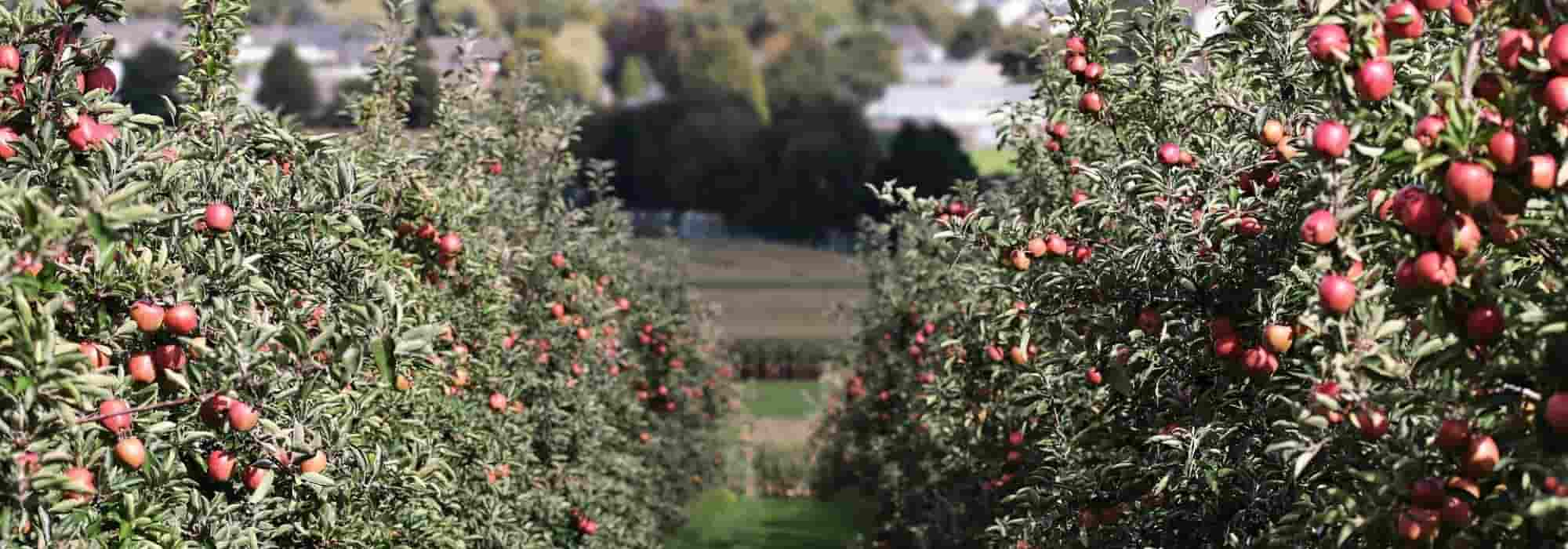
7 fruit trees for continental climate
A selection of fruit trees to plant in (semi)-continental climate regions
Contents
There are four climates in France: the Mediterranean climate, the oceanic climate, the mountain climate, and the continental climate, sometimes referred to as semi-continental for precision. Each zone has its own specificities. Let’s focus on the continental climate. In a nutshell, it can be characterised by hot summers and harsh winters. Specifically, the temperature range between the different seasons is quite significant, particularly in spring, with chilly mornings and warm afternoons. Summers are hot, marked by numerous thunderstorms that lead to precipitation, especially around the reliefs. Autumn arrives quite early, with frosts as early as October. As for winters, they can be cold, although temperatures are milder than in the mountains, with snow starting in November. It is not uncommon to experience frosts until May. This continental climate affects the north-east of France, the Massif Central, and part of Burgundy, not to mention the Saint-Étienne region due to its altitude.
With such a contrasting climate, there’s little hope of harvesting apricots and peaches. Late spring frosts would be fatal to flowering and thus to fruiting. However, some fruit trees adapt perfectly to these climatic conditions. Discover our selection of fruit trees to grow in a continental climate.
The apple tree, the most common fruit tree
How can you resist the temptation to bite into a beautiful apple? Especially since the apple tree (Malus domestica) belongs to that category of fruit trees perfectly adaptable to all situations. Hardy down to -30 °C, easy to grow (at least for open-air varieties or Spur types, columnar or less ramified), the apple tree is ideal in regions with a continental climate as it enjoys the warmth of summer, the cold of winter which it needs, and relative humidity.
With over 600 varieties, the apple tree flowers late, allowing it to bypass late spring frosts, common in regions with a continental climate. Among this array of varieties, there are many that are local and traditional, thus suited to the climatic specifics of a territory.
For instance, the ‘Belle fille de Salins’ is a self-fertile apple tree, originating from the Jura, very resistant to cold. The ‘Reine des Reinettes’ is also perfect in a continental climate, very resistant to spring frosts and, moreover, one of the best pollinator varieties. ‘Melrose’, ‘Jonagold’, ‘Mondial Gala’, and ‘Belle de Boskoop’ will also yield very well.

The apple tree is a very hardy fruit tree
The apple tree has a few minor drawbacks: it is susceptible to numerous fungal diseases such as apple scab, powdery mildew, or brown rot. However, agronomic research is enabling the creation of more resistant apple trees. Additionally, apple trees are generally self-sterile, meaning that two need to be planted to ensure pollination. Finally, if the apple tree is trained, its pruning can be demanding. Its last minor drawback is its relatively slow growth and long time to first fruiting (between 3 and 7 years). However, production then spans over 80 years!
The apple tree should be planted in rich, fresh, and well-drained soil. It accepts heavy, loamy, and clay-limestone soils. Choose a sunny location for it.
→ Learn all about apple trees, planting, pruning, and maintenance in our comprehensive guide.
Read also
Apple tree: planting, pruning and careThe pear tree, relatively adaptable
Although it has an early flowering period (in March-April, before the leaves appear), the pear tree (Pirus domestica) thrives in regions with a continental climate. Native to northern Asia, the pear tree can withstand temperatures as low as -30°C. However, it does not appreciate heat and drought or excessive humidity. Cold winds are also not beneficial for it. This is why it is preferable to provide a south-east or south-west exposure. By respecting these cultural conditions, the pear tree produces firm and juicy fruits.
The pear tree can be trained in various ways, either in open air or trained in a double U shape. Naturally, the pruning will differ. It generally fruits from the third year. It prefers cool, deep, rich soils and well-drained, clay-limestone or clay-siliceous soils. If your land is dry, too calcareous, or poorly drained, forget about the pear tree.

The pear tree adapts very well to regions with a continental climate
As most pear trees are self-sterile, it is necessary to plant a pollinator variety nearby.
For planting in a continental climate, choose varieties such as ‘Beurré Hardy’ which grows up to 800 metres in altitude, ‘Conference’, ‘Doyenné du Comice’, or even ‘Comtesse de Paris’.
→ Learn all about pear trees, planting, pruning, and maintenance in our comprehensive guide.
Discover other Fruit trees
View all →Available in 0 sizes
Available in 1 sizes
Available in 1 sizes
Available in 1 sizes
Available in 1 sizes
Available in 1 sizes
Available in 1 sizes
Available in 1 sizes
Available in 1 sizes
Available in 1 sizes
Medlar, a fruit tree to (re)discover
Have you ever tasted medlar, those brown fruits that are eaten (almost) over-ripe in October or November after the frosts? With an astonishing flavour, the medlar from the common medlar (Mespilus germanica) has absolutely nothing to do with the loquats from the Japanese loquat (Eriobotrya japonica), which only grows and bears fruit in the South and South-West. In contrast, the common medlar thrives in regions with a colder climate. It is a tree from the rose family, like the apple and pear trees, particularly resistant to cold and requiring no special care.
Its flowering takes on white shades leaning towards pink or cream in May-June, and in autumn, it adorns itself with a beautiful bronze-pink colour. This fruit tree enjoys both sun and shade, but a sunny exposure is preferable for good fruiting. Growing rather slowly, the Japanese loquat can be attacked by monilia and powdery mildew.

The common medlar should not be confused with the Japanese loquat, which grows and bears fruit in the south
There is only one variety of Mespilus germanica, but there are also a few old cultivars such as ‘Giant d’Evreinoff’ (or ‘Monstrous d’Evreinoff’), a self-fertile variety with early fruits that are larger than those of other varieties.
Read also
What are the best apple varieties?Quince, the aesthetic and productive fruit tree
Another fruit tree from the Rosaceae family that should not be confused with the Japanese quince (Chaenomeles), a shrub primarily ornamental with its lovely red spring flowering. Our quince (Cydonia oblonga) produces large fruits with a velvety epidermis that are best enjoyed cooked. When raw, they are astringent, although they emit an exquisite fragrance. The quince is a somewhat twisted tree that can reach heights of 4 to 8 metres. Its pink spring flowering smells divine.
This fruit tree, naturalised in the south of France, adapts easily to regions with harsher climates. Hardy down to -25 °C, it is also not demanding regarding soil type, provided it is cool, deep, and fertile. As for the location, it should be sunny and, above all, sheltered from cold winds. Occasionally affected by moniliosis or entomosporiosis, the quince does not require any special pruning. Self-fertile, it does not need another plant to bear fruit.
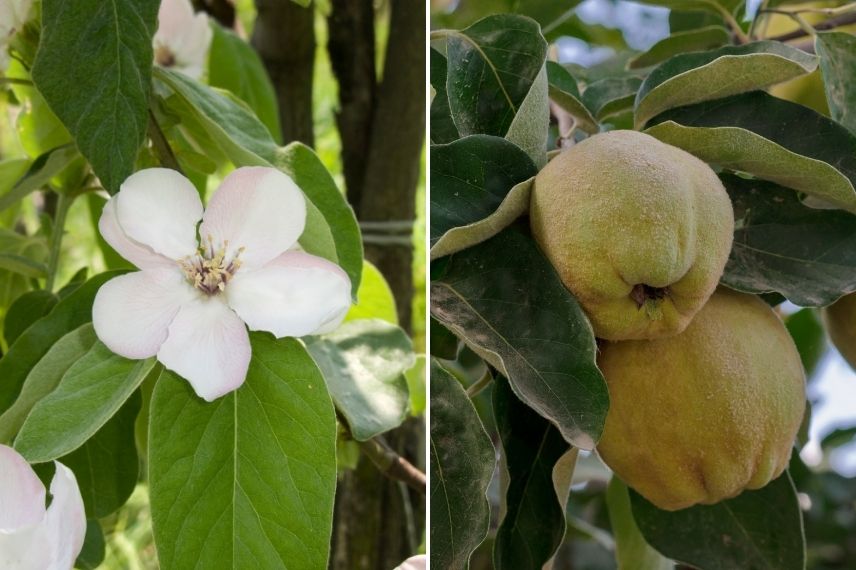
Naturalised in the south, the quince also thrives in colder regions
If we had to highlight a particular variety, the quince ‘Champion’ is remarkable for its productivity, the size of its fruits, and its vigour. As for the ‘Monstrous of Vranja’, it is also very productive, yielding highly fragrant fruits.
→ Learn all about the Quince, planting, pruning, and care in our comprehensive guide.
The plum tree, the most demanding fruit tree of all
The plum tree (Prunus domestica) is the ideal fruit tree to plant in regions with a marked continental climate. Indeed, its flowering in April-May is early and therefore potentially susceptible to late frosts, but in practice, it is relatively resilient. When you add to this quality its hardiness down to -15 °C, its quick fruiting, and its low soil requirements, this fruit tree is the perfect candidate for a garden or orchard. It still prefers well-drained, deep silty-clay or clay-limestone soils.
Moreover, the varieties are numerous, ranging from very juicy Reine-Claude to the beautifully coloured blue-black quetsches, as well as mirabelles or the Ente plum, which is used for producing Agen prunes. Some varieties are self-fertile, while others are not, so the choice must be made with full knowledge of the facts to avoid not having any fruit.
While plum trees can be planted throughout France, some varieties are better suited for a continental climate. Thus, mirabelles and quetsches particularly enjoy this climate, while Reine-Claude prefer a more oceanic climate. They are indeed very present in the east of France, with the Lorraine mirabelle even benefiting from an IGP (Protected Geographical Indication). The ‘Mirabelle de Nancy’ produces small, very sweet yellow fruits in August, just like the ‘Mirabelle de Metz’. Very common in Alsace, the quetsche is typical of the east of France. You can plant the ‘Quetsche d’Alsace’, a very productive self-fertile variety, or the ‘Quetsche Stanley’, a vigorous variety with large fruits.

The plum trees Mirabelle and Quetsches are the most suited to the continental climate
→ Learn all about plum trees, planting, pruning, and maintenance in our comprehensive guide.
The cherry tree, the fruit tree that grows everywhere in France
Another prominent member of the Rosaceae family, the cherry tree easily withstands continental climate. Whether it produces sweet cherries (Prunus cerasus) or sour cherries (Prunus avium), the cherry tree is indeed hardy down to -20°C and blooms relatively late, until April-May for some varieties. It is also very easy to grow, preferring deep, cool, and well-drained soils. It only fears clay soils where moisture is prevalent. Of course, it will need a sunny location, preferably well sheltered from the coldest winds.
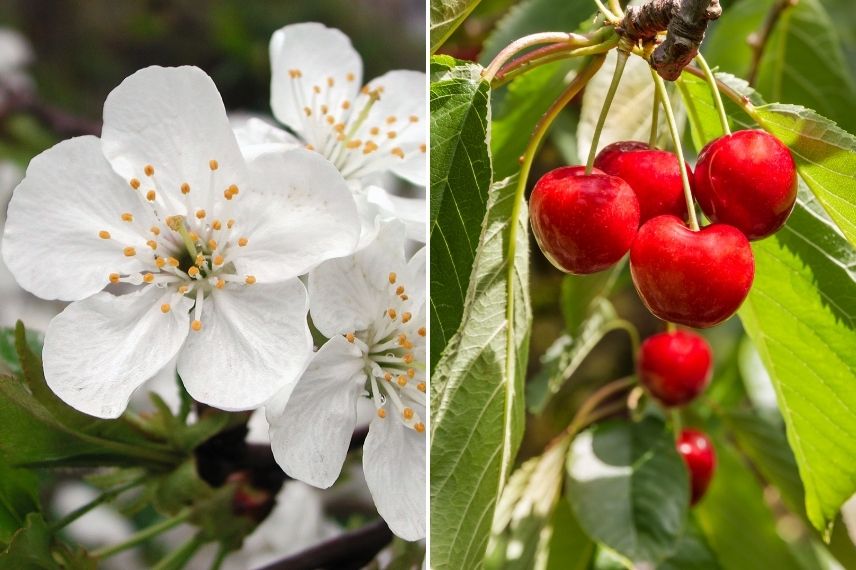
All varieties of cherry trees thrive in a continental climate
Pruning is not obligatory and can even be detrimental to the cherry tree as it encourages the entry of diseases. A simple refresh to limit its bulk is sufficient. The cherry tree remains relatively susceptible to brown rot, grey mould, bacterial canker, or lead disease. Aphids can also compromise the harvest, as can the cherry fruit fly.
Discover our wide range of cherry trees that can be planted in regions with a Mediterranean climate.
→ Learn all about cherry trees, planting, pruning, and maintenance in our comprehensive guide.
The walnut tree, the typical tree of cool climates
The Grenoble walnut has a Protected Designation of Origin (PDO). Needless to say, the walnut tree (Juglans regia) thrives in regions with a cool climate. It forms a beautiful tree from the Juglandaceae family that can reach 15 metres. Resistant to temperatures as low as -30°C, it can even grow at altitudes of 800 to 1000 metres, provided it is sheltered from strong winds. However, its young shoots are sensitive to late frosts.
The walnut tree has a relatively slow growth rate. It does not produce fruit until around fifteen years, although some varieties bear fruit earlier. Although self-fertile, the walnut tree requires the presence of other pollinating walnut trees, as the male and female flowers are often staggered.
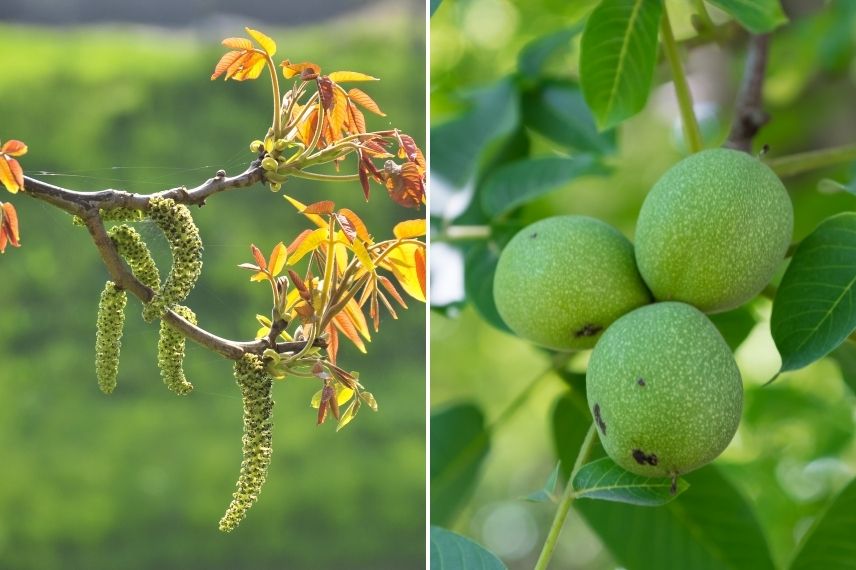
In a continental climate, late-flowering walnut trees are preferred
For regions with a pronounced continental climate, it is advisable to choose rather late varieties such as ‘Franquette’, the most widely planted variety in the Grenoble area, or ‘Parisienne’, which flowers in May-June.
→ Learn all about the Walnut tree, planting, pruning, and care in our comprehensive guide.
A craving for exoticism?
If you fancy tasting fruits with more exotic flavours, it’s also possible in a continental climate. Some exotic fruit trees that require sunlight to bear fruit are perfectly hardy to low temperatures. Ingrid has prepared a selection of 7 fruit trees that are both exotic and hardy.
- Subscribe!
- Contents
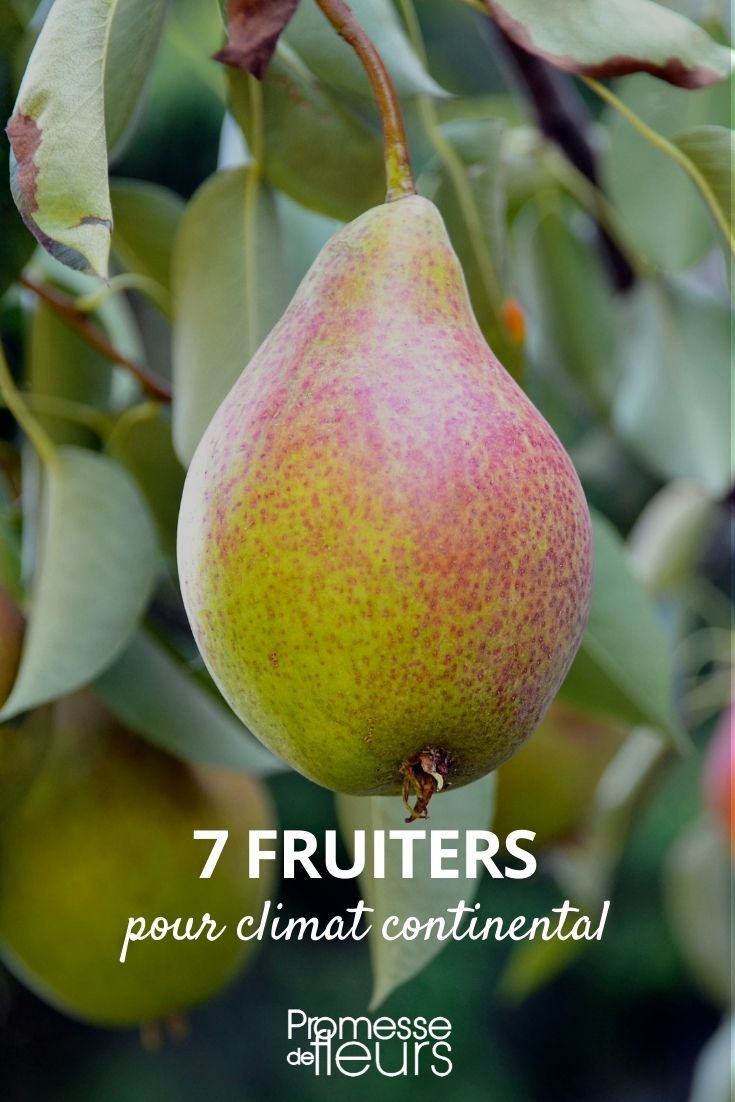
































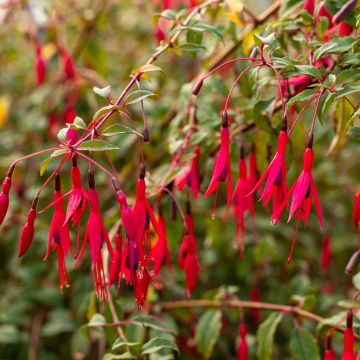
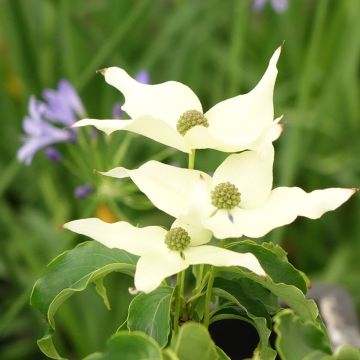
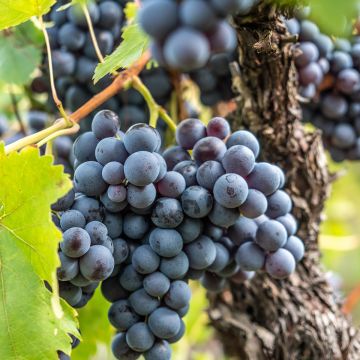

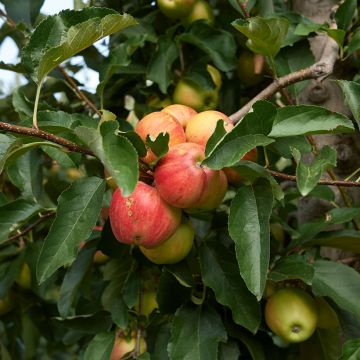
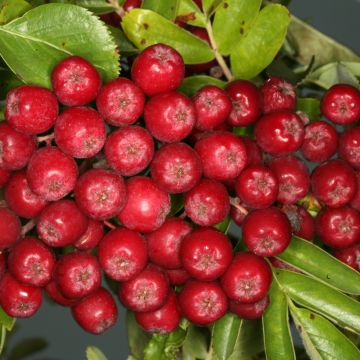
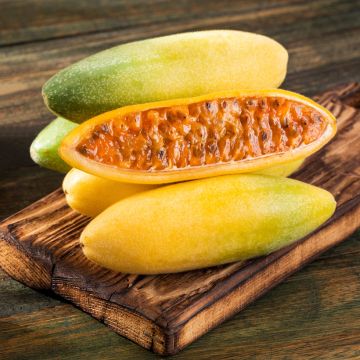
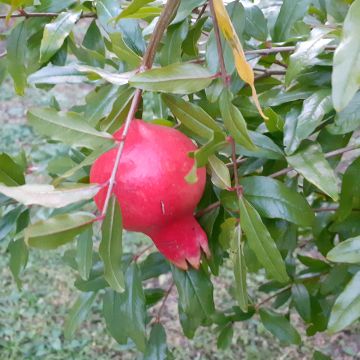
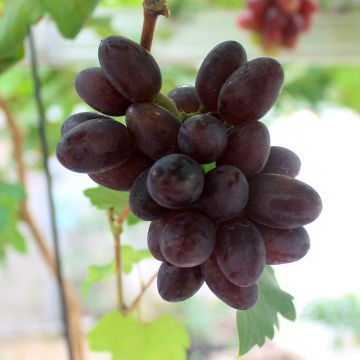
Comments